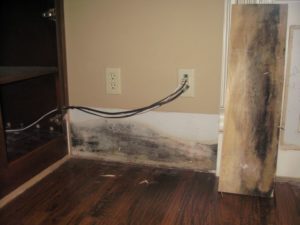If you have bad odors in your home, take these steps:
First… Track down the source of the odor using your sense of smell.
The typical “bad odor” is actually quite diverse in what it could be, and what it smells like. Some bad odors have a certain “wetness” or damp quality to them that would indicate either the decay of organic material, or the growth of mold. Other bad odors are distinctly “food” sourced, and can come from sewage lines or drain pipes which are clogged. Some may be caused by cigarette smoke being trapped in fabrics.
Some of the most common sources of bad odors in a home will include:
- Trash cans in the kitchen without a lid.
- Kitchen sinks, which have food matter in the drain.
- Microwaves which haven’t been cleaned in a long time.
- Carpeting, which can cling to odors for an extended period of time, even after vacuuming.
The two things that you should know about odors are:
- They require moisture. The more pungent the smell, the more moisture that’s involved. The action of smell requires that molecules be carried to our senses by way of water; even the water in the air, or the mucus in your nose, can help to “carry a scent.” It’s a safe bet that if you’re dealing with a strong odor, you’re dealing with a moist source of it.
- You’re usually smelling bacteria, or the byproduct of bacterial growth and digestion. We can actually attribute a lot of “bad” odors in life to bacteria, from our armpits to the off-smell that fish get when they’re not as fresh as they used to be. Our brains have been finely tuned to detect these smells because they’re usually associated with something that’s a threat to our health. The breakdown of food, for example, has bacteria as a culprit, which in turn would make us sick if we were to eat it. The smell is a definite red flag.
What to do:
Once you’ve detected the source, or at least a source of a bad odor, the next step is to clean it using chemicals and Reset Restoration in Tulsa, Oklahomacleaners that are safe for the household. Always read the warning labels on any chemicals that you use, and never mix cleaning products. You could unwittingly create a combination that produces noxious, or even deadly gas, including chlorine gas, which is produced as a result of mixing bleach and ammonia.
- Get as much ventilation into the area where cleaning is taking place as you can, to get rid of the odor faster, and to make sure you’re safe, such as when you’re using bleach.
- Dry any items that you can.
- Completely seal garbage, and clean the container in the event that any moisture leaked into the can in the event that your rubbish is the culprit.
- If your sewage lines or pipes are the source of a bad odor, use a household drain cleaner at first. If that isn’t working, you may need to call a plumber.
It is possible you have a plumbing stack (through the roof) that is plugged or partially blocked!
If your Tulsa home or business has suffered significant odor damage, please contact Reset Restoration today and request a free quote on damage restoration. Follow Reset Restoration on Facebook!

Author: Dick Wagner, restoration consultant, commercial marketing coach, bad odors, bacteria, mold



